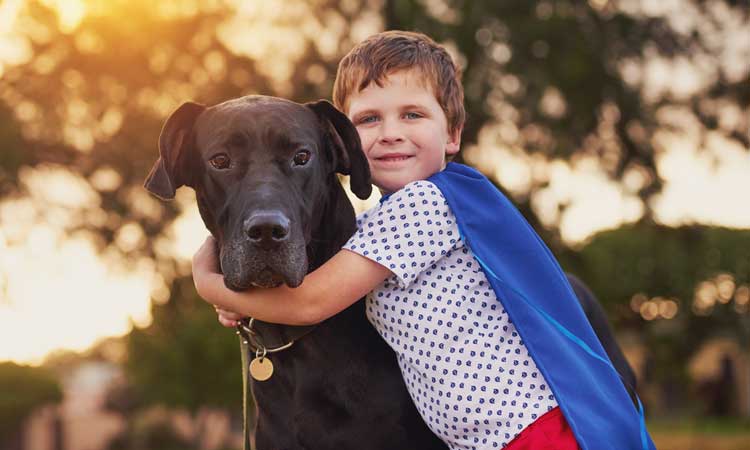3 ways pets help with emotional development in children
I love when I get to spend one-on-one time with the Caiola kids, Sofia and Carmelo. It makes my day when they run over to me after school, to scratch me behind the ears and give me extra doggie treats when nobody is looking.
It’s no secret that many children consider their family pets to be their best friends. Cats and dogs love you unconditionally and accept you as you are. Even when you’re having a hard time loving yourself, we will always be there to remind you what a great person you are!
Pet care helps your child develop emotional intelligence.
Emotional intelligence is a measure of empathy and the ability to identify and manage your own emotions and the emotions of others. Research shows that children who owned a pet had higher emotional intelligence compared to children who didn’t.
Did you know that a child with higher emotional intelligence is also more likely to succeed in school? According to Psychologist Daniel Goleman, IQ makes up only 20 percent of life success. Other factors such as emotional intelligence, temperament, family education levels and luck fill in the rest.
He explains “cognitive skills—verbal comprehension, memory, reasoning and processing speed—will help academically, but they will only get a person so far in life.” He adds, “To really go the distance, those IQ traits should be rounded out with social-emotional skills like motivation, perseverance, impulse control, coping mechanisms and the ability to delay gratification.”
Here are three ways that pets help with emotional development in children:
-
Teaches responsibility
Whether it’s something as simple as refilling your dog’s water bowl or cleaning your cat’s litter box, caring for a pet teaches kids responsibility.
To encourage good behavior, make sure to provide positive feedback every time your child does a pet chore without being asked.
“Try to reward your child in some small way with a fun pet activity that brings feelings of love and connection with the pet. Whenever possible, it’s best to praise and reward immediately after the task has been done for the strongest positive reinforcement.”
-
Helps cultivate empathy
Kids are inherently focused on their own needs, so having to take to care for a pet will teach them to focus on the needs of others.
“Caring for a pet draws a self-absorbed child away from himself or herself,” according to Denise Daniels, child development and parenting expert. “Empathy also involves the ability to read nonverbal cues — facial expressions, body language, gestures — and pets offer nothing but nonverbal cues. Hearing a kitten yowl when it wants to eat or seeing a dog run to the door when it wants to go outside get kids to think, “What are their needs, and what can I do to help?”
-
Develops compassion
While children tune into an animal’s wants and needs, it strengthens children’s nurturing abilities. When they learn to respect and care for animals, they will learn how to respect and care for others and themselves.
“If there are pets in the house, parents and children frequently share in taking care of the pet, which suggests that youngsters learn at an early age how to care for and nurture a dependent animal,” according to researchers Nienke Endenburg and Ben Baarda.
Pets teach children some of the most important life skills: the meaning of companionship, compassion and unconditional love. This lays the groundwork for forming meaningful connections and relationships later in life. And relationships are what makes life worth living, don’t you think?
Anatole France says it best: “Until one has loved an animal, a part of one’s soul remains unawakened.”



